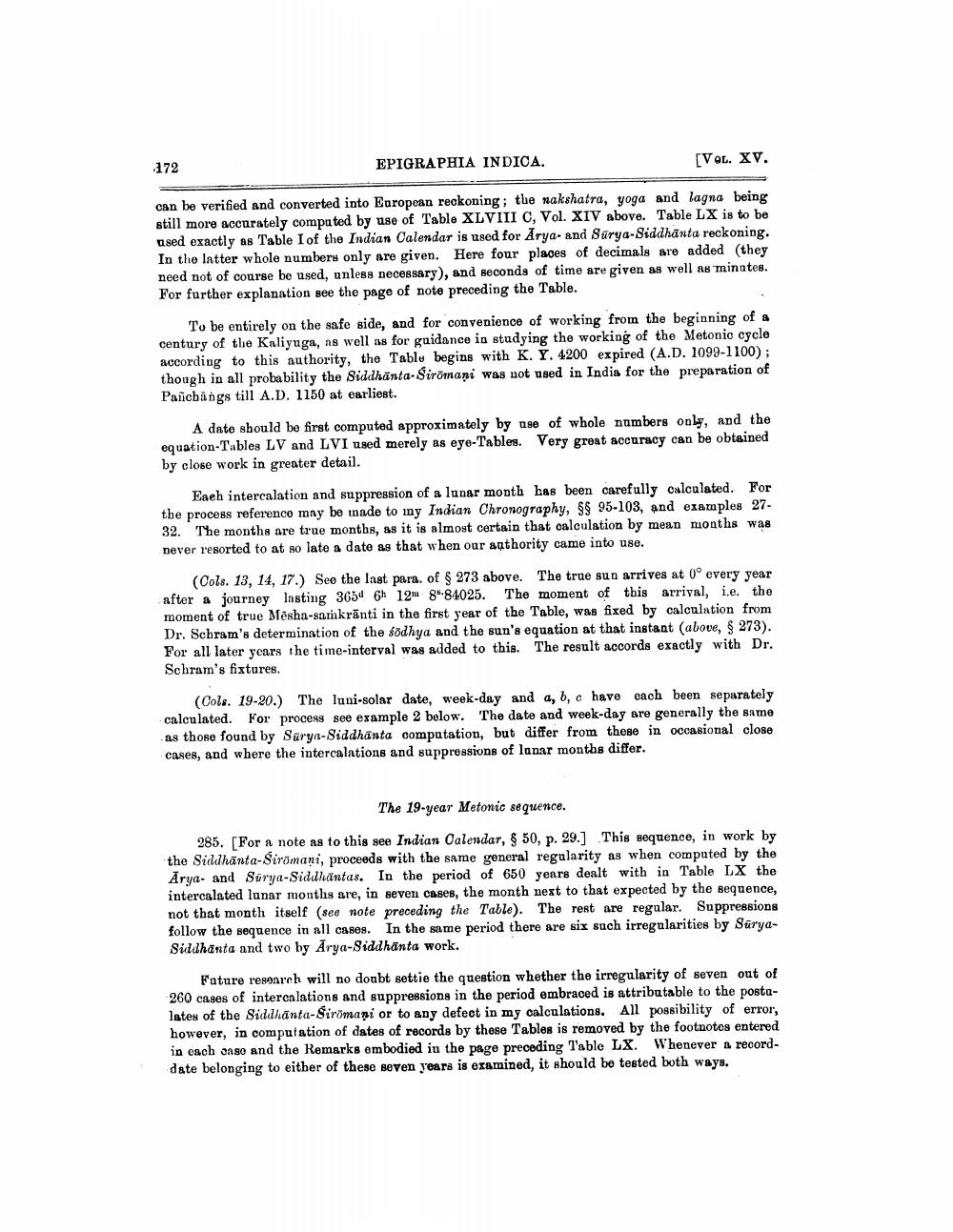________________
172
EPIGRAPHIA INDICA.
[Veu. XV.
can be verified and converted into European reckoning; the nakshatra, yoga and lagna being still more accurately compated by use of Table XLVIII C, Vol. XIV above. Table LX is to be used exactly as Table 1 of the Indian Calendar is used for Arya and Surya-Siddhānta reckoning, In the latter whole numbers only are given. Here four places of decimals are added (they need not of course be used, unless necessary), and seconds of time are given as well as minutes. For further explanation see the page of note preceding the Table.
To be entirely on the safe side, and for convenience of working from the beginning of a century of the Kaliyuga, ns well as for guidance in studying the working of the Metonic cycle according to this authority, the Tably begins with K. Y. 4200 expired (A.D. 1099-1100); though in all probability the Siddhänta- Siromani was not used in India for the preparation of Paicbings till A.D. 1150 at earliest.
A date should be first computed approximately by use of whole numbers only, and the equation-Tables LV and LVI used merely as eye-Tables. Very great accuracy can be obtained by close work in greater detail.
Eaeh intercalation and suppression of a lunar month has been carefully calculated. For the process reference may be made to my Indian Chronography, SS 95-103, and examples 2732. The months are true months, as it is almost certain that calculation by mean months was never resorted to at so late a date as that when our authority came into use.
(Cols. 13, 14, 17.) See the last para. of $ 273 above. The true sun arrives at 0° every year after a journey lasting 3654 6h 12 86.84025. The moment of this arrival, i.e. the moment of true Mēsha-samkrānti in the first year of the Table, was fixed by calculation from Dr. Schram's determination of the sõdhya and the sun's equation at that instant (above, $ 273). For all later years the time-interval was added to this. The result accords exactly with Dr. Schram's fixtures.
(Cols. 19-20.) The luni-solar date, week-day and a, b, c have cach been separately calculated. For process see example 2 below. The date and week-day are generally the same as those found by Surya-Siddhanta computation, but differ from these in occasional close cases, and where the intercalations and suppressions of lanar months differ,
The 19-year Metonic sequence.
285. [For a note as to this see Indian Calendar, $ 50, p. 29.] This sequence, in work by the Siddhānta-Siromani, proceeds with the same general regularity as when computed by the Arya- and Surya-Siddhantas. In the period of 650 years dealt with in Table LX the intercalated lunar months are, in seven cases, the month next to that expected by the sequence, not that month itself (see note preceding the Table). The rest are regular. Suppressions follow the sequence in all cases. In the same period there are six such irregularities by SüryaSiddhanta and two by Arya-Siddhānta work.
Fature research will no doubt settie the question whether the irregularity of seven out of 260 enges of intercalations and suppressions in the period embraced is attributable to the postalates of the Siddhānta-Siromani or to any defect in my calculations. All possibility of error, however, in computation of dates of records by these Tables is removed by the footnotes entered in ench Ago and the Remarks embodied in the page preceding Table LX. Whenever & recorddate belonging to either of these seven years is examined, it should be tested both ways.




